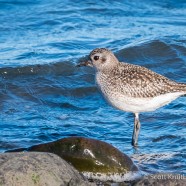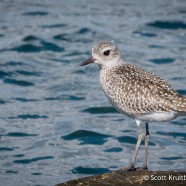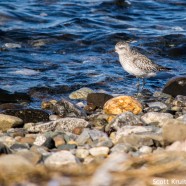Black-bellied Plovers
These Black-bellied Plovers (Pluvialis squatarola) are roosting on the Stratford Point reef balls that were a part of the living shoreline expansion. This has not been an uncommon sight as long-legged waders, ducks, and other shorebirds (a big flock of Dunlin this past Sunday!) have been spending time resting on them at higher tides. It is only the beginning of the action for this restoration with much planned here for 2017…
Read MoreJanuary Black-bellied Plover
This Black-bellied Plover (Pluvialis squatarola) is one of several that have been hanging out around the Stratford Point area all winter. The species can overwinter in Connecticut if the season is cooperative enough without ice, snow and frigid temperatures making foraging and surviving more difficult, and so far we have been treating them relatively well. While it has been a chilly week we have only had a trace of snow, and the daytime temperatures still climb to above freezing. In only two months dozens of our volunteer monitors will be hitting the field for the beginning of the Audubon...
Read MoreBlack-bellied Plover
Though this Black-bellied Plover (Pluvialis squatarola) is not quite living up to its name during the non-breeding season it still has a surprisingly appealing look. The plumage may initially seem dull but when it takes flight it flashes some of that namesake color with its black axillars and an always white rump and tail. The species can be found hanging out on the Atlantic Coast in many locations during the late autumn and winter. It is a bird we record nearly year-round for our work in the Audubon Alliance for Coastal Waterbirds.
Read MoreBlack-bellied Plover (Pluvialis squatarola)
Even when the Black-bellied Plover (Pluvialis squatarola) is not quite living up to its name during the non-breeding season it still has a surprisingly appealing look. The plumage may initially seem dull but when it takes flight it flashes some of that namesake color with its black axillars and an always white rump and tail. The species can be found hanging out on the Atlantic Coast in many locations during the late autumn and winter. It is a bird we record nearly year-round for our work in the Audubon Alliance for Coastal Waterbirds.
Read More







